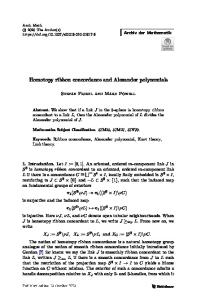Basin and petroleum system modeling in conjunction zone of the Alexander and Srednevasyugan anticlines and Ust-Tym depre
- PDF / 5,508,628 Bytes
- 10 Pages / 595.276 x 790.866 pts Page_size
- 50 Downloads / 862 Views
ORIGINAL PAPER-EXPLORATION GEOLOGY
Basin and petroleum system modeling in conjunction zone of the Alexander and Srednevasyugan anticlines and Ust‑Tym depression, southeastern part of the West Siberian hydrocarbon province (Russia) Alina Kosmacheva1 · Marina Fedorovich1 Received: 7 April 2020 / Accepted: 2 November 2020 © The Author(s) 2020
Abstract The paper is aimed at the basin and petroleum system modeling in the conjunction zone of the Alexander and Srednevasyugan anticlines and Ust-Tym depression during the Mesozoic-Cenozoic time. The exploration area is located in the southeastern part of the West Siberian hydrocarbon province. The present research primarily identifies the oil-window-entry time, maturity, generation points, generation power, and remaining potential of the Togur and Bazhenov source rocks. The Togur oil-window-entry time is 139.5 Ma. The Bazhenov oil-window-entry time is 99 Ma. Liquid hydrocarbons are extensively generated by the source rocks at the present time, since the Togur and Bazhenov Formations are found to be in the oil window. The significant amount of generated hydrocarbons is lost in migration processes. The source rock generation power and remaining potential are 1.1 and 1.5 billion tons of hydrocarbons, respectively. Keywords Basin and petroleum system modeling · Source rock · Bazhenov formation · West Siberian hydrocarbon province
Introduction To solve the problems associated with the evolution of a sedimentary basin and the prediction of oil and gas occurrence, modern technologies such as basin and petroleum system modeling are widely used (Baur et al. 2011; Hakimi et al. 2010; Kerimov et al. 2011; Makeen et al. 2016a; Makeen et al. 2016b). Comprehensive interpretation of geophysical, geological, and geochemical information can be essential theoretical background for the further identifying of burial and thermal histories of a basin (Al-Hajeri et al. 2009). The West Siberian hydrocarbon province is the largest oil and gas basin in the world. Geographically, it is confined to the West Siberian Plane (Kontorovich et al. 1975). The petroleum industry and the geological exploration of the southeastern part of the province have lasted for more * Alina Kosmacheva [email protected] 1
Trofimuk Institute of Petroleum-Gas Geology and Geophysics of the Siberian Branch of the Russian Academy of Sciences, Novosibirsk, Russia
than 40 years (Kontorovich 2002). Most of the fields discovered therein have already reached the stage of declining production. It is obvious that the research of hard-to-recover reserves from complex and deep-seated deposits is a priority direction of the worldwide energy sector. It is the Chkalov oil and gas field that may be classified as an appropriate one. According to the oil and gas zoning, it is situated in the southeastern part of the West Siberian hydrocarbon province (Fig. 1). Tectonically, the Chkalov field is located in the conjunction zone of the Alexander and Srednevasyugan anticlines and Ust-Tym depression (Fig. 2). There are the followin
Data Loading...











